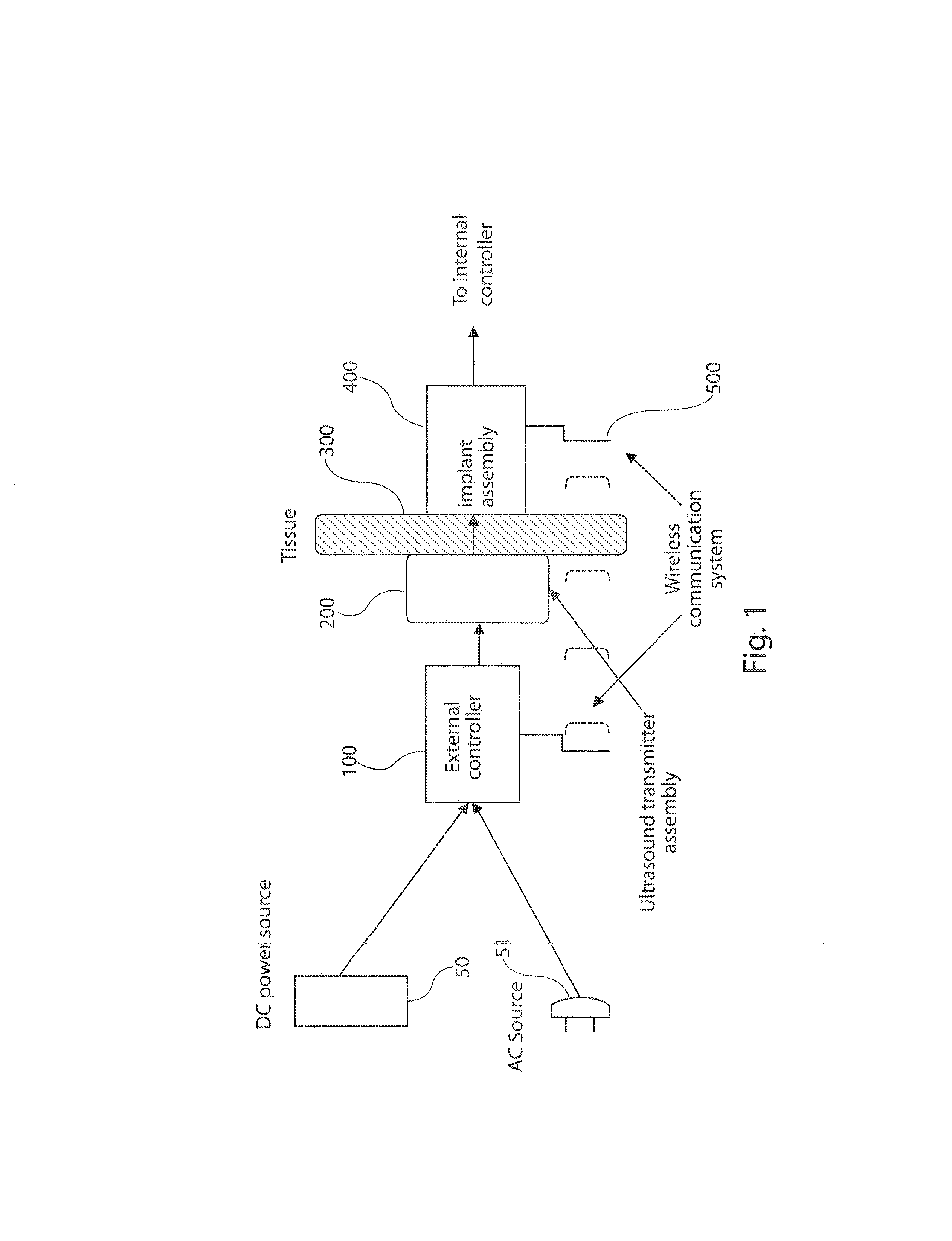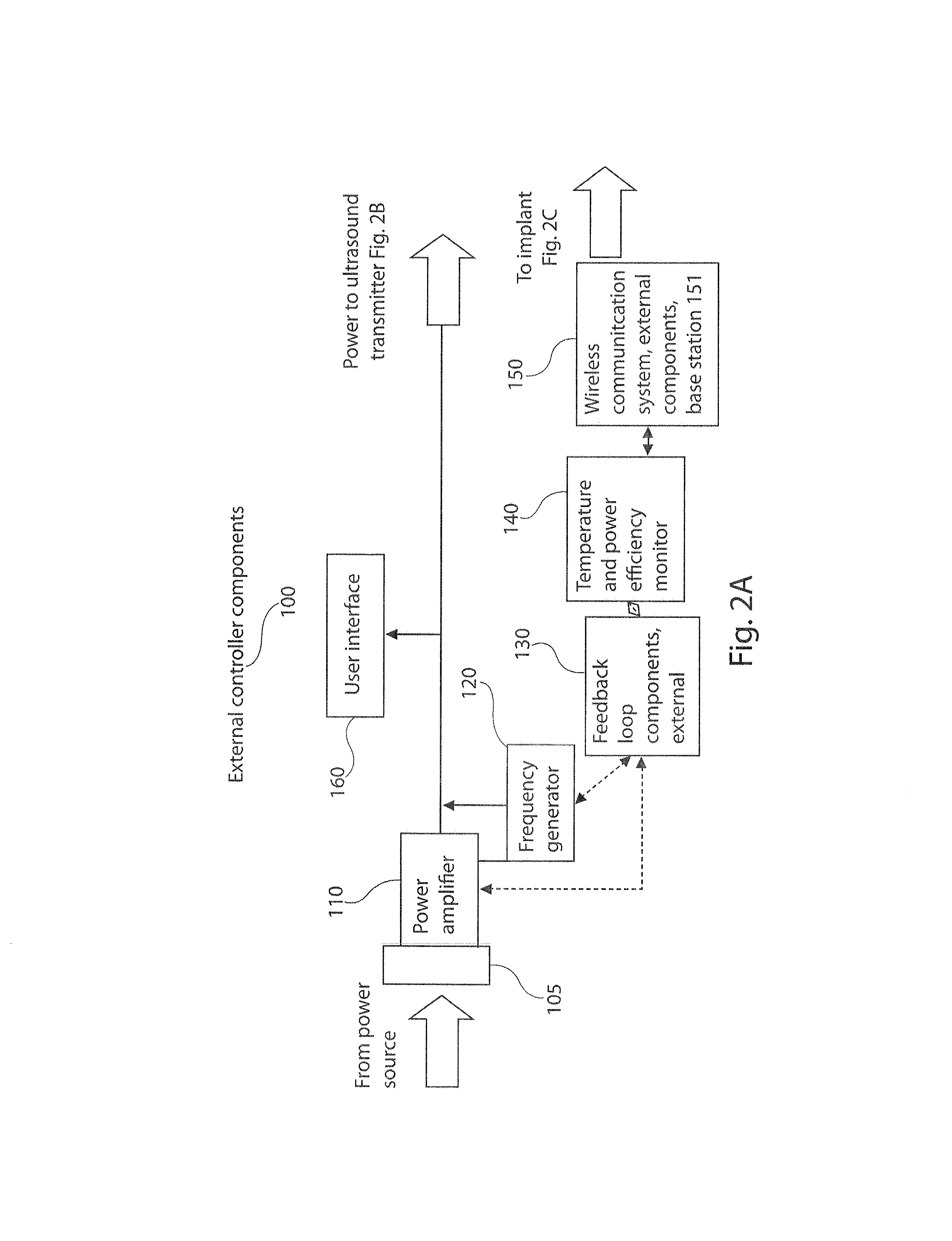High power ultrasound wireless transcutaneous energy transfer (us-tet) source
a wireless transcutaneous energy and source technology, applied in the direction of exchanging data chargers, other medical devices, therapy, etc., to achieve the effect of optimizing power transfer and enhancing focusing effects
- Summary
- Abstract
- Description
- Claims
- Application Information
AI Technical Summary
Benefits of technology
Problems solved by technology
Method used
Image
Examples
Embodiment Construction
Overall Assembly
[0045]FIG. 1 is an overall block diagram of an US-TET system in accordance with the present invention. FIGS. 2A, 2B, and 2C are block diagrams the items within the external controller 100, the transmitter assembly 200, and the implant assembly 400. Referring to FIG. 1, two possible sources of power can operate the system. They are either a direct current (DC) power supply 50 such as a battery, typically worn by the patient, or a conventional room alternating current (AC) source 51. Circuitry within the external controller 100 determines whether the input power is low frequency AC. If so, it proceeds through a DC converter and then through circuitry 120 which converts it to high frequency ultrasound. The external controller 100 determines the level of input power and frequency of the ultrasound. These can be operated in two modes, manually and automatically, the latter via a feedback loop 130 and 450 made possible by the wireless communication system 500, which has ex...
PUM
 Login to View More
Login to View More Abstract
Description
Claims
Application Information
 Login to View More
Login to View More - R&D
- Intellectual Property
- Life Sciences
- Materials
- Tech Scout
- Unparalleled Data Quality
- Higher Quality Content
- 60% Fewer Hallucinations
Browse by: Latest US Patents, China's latest patents, Technical Efficacy Thesaurus, Application Domain, Technology Topic, Popular Technical Reports.
© 2025 PatSnap. All rights reserved.Legal|Privacy policy|Modern Slavery Act Transparency Statement|Sitemap|About US| Contact US: help@patsnap.com



